MikeG.
Established Member
Some while ago I got a whole collection of nasty plastic handled tenon saws with a view to re-handling one or two of them for my son in law, who is new to woodworking and somewhat short of tools. With christmas as an excuse, I picked one of them to work on. Turns out it was a Tyzack:
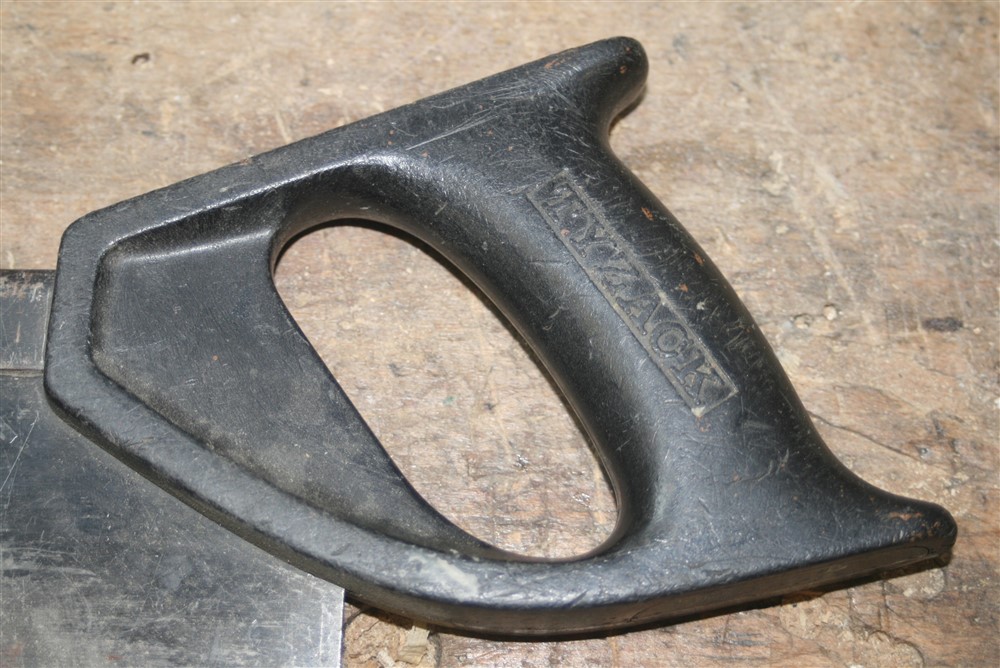
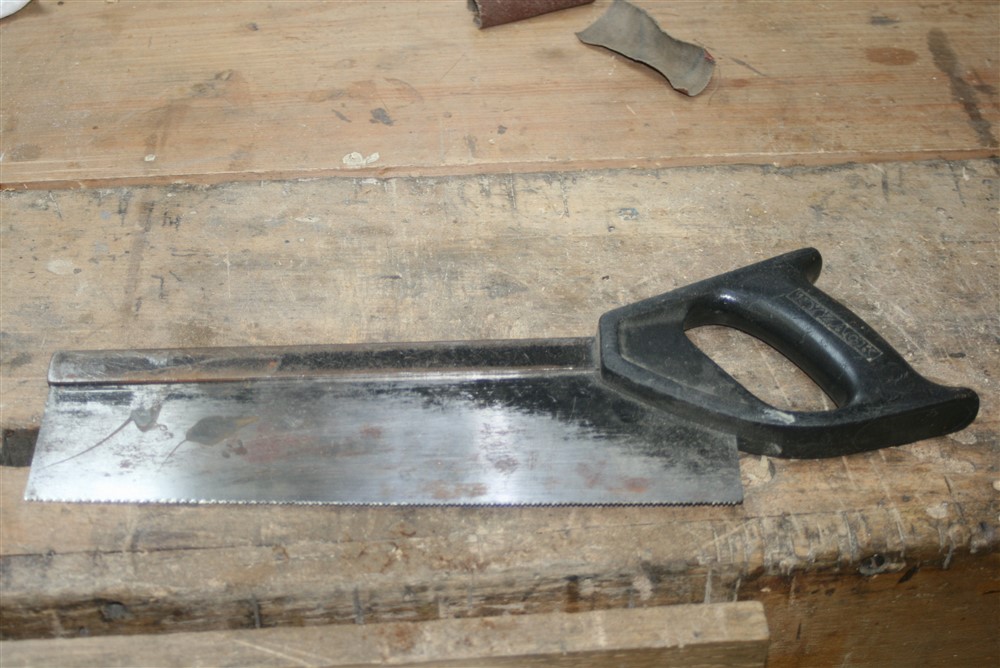
It was originally painted black, it seems. Anyway, it cut nicely (14 TPI, cross-cut teeth), teeth and plate were all fine. I've got some others, and a nice piece of bog oak, so I decided to cut out 4 at once:
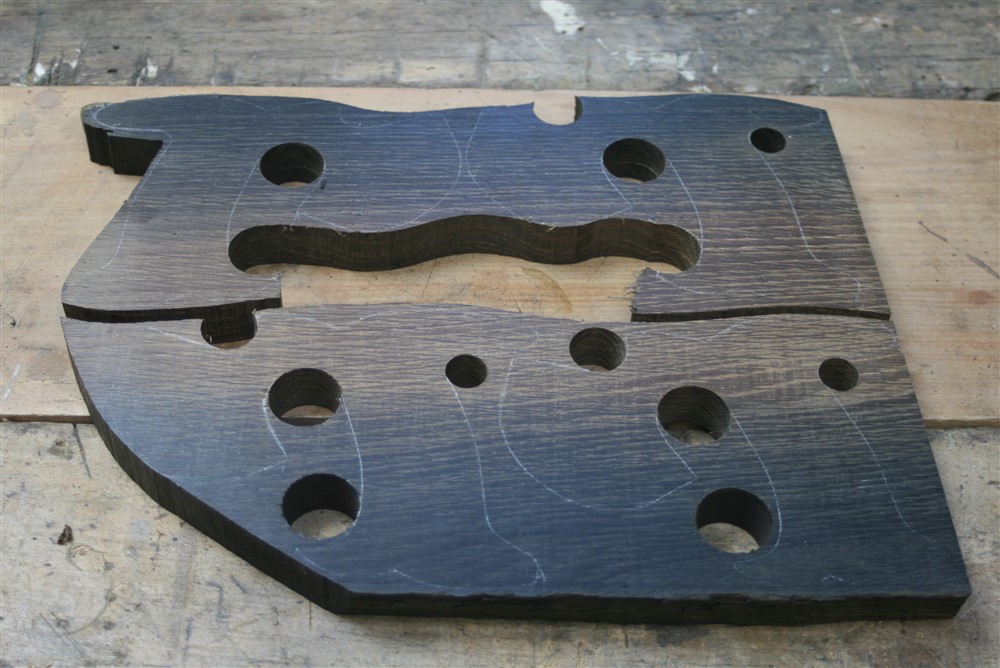
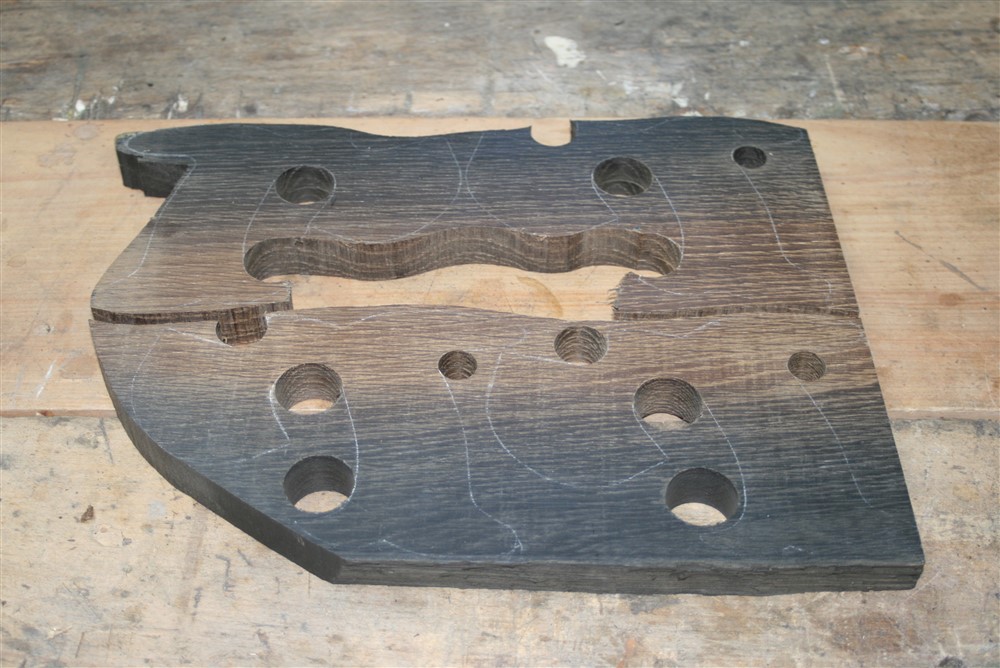
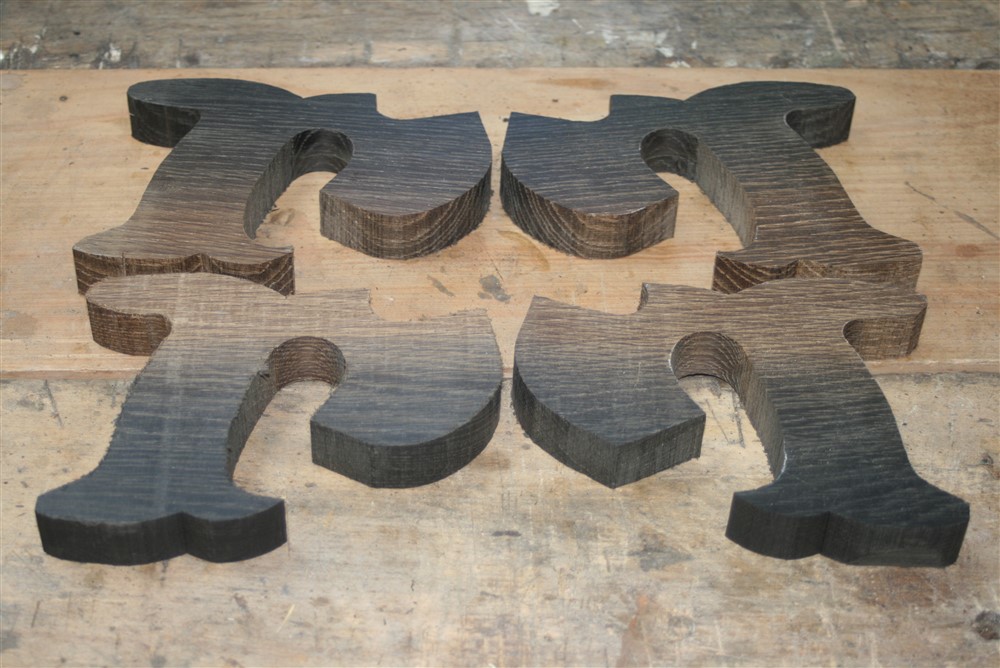
I cleaned up to the line with a belt sander, rasps and files:
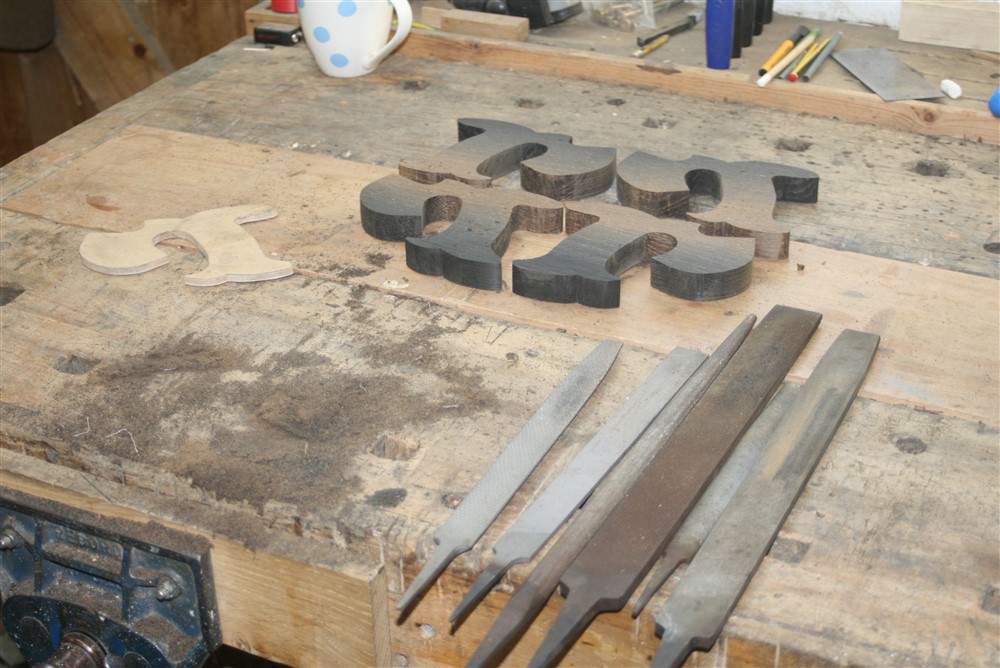
Next step was to round-over on the router table. Please, if you're a beginner, don't do this. The chance of catching an end grain and having the work phlicked* around and your fingers pulled into the cutter are extremely high:
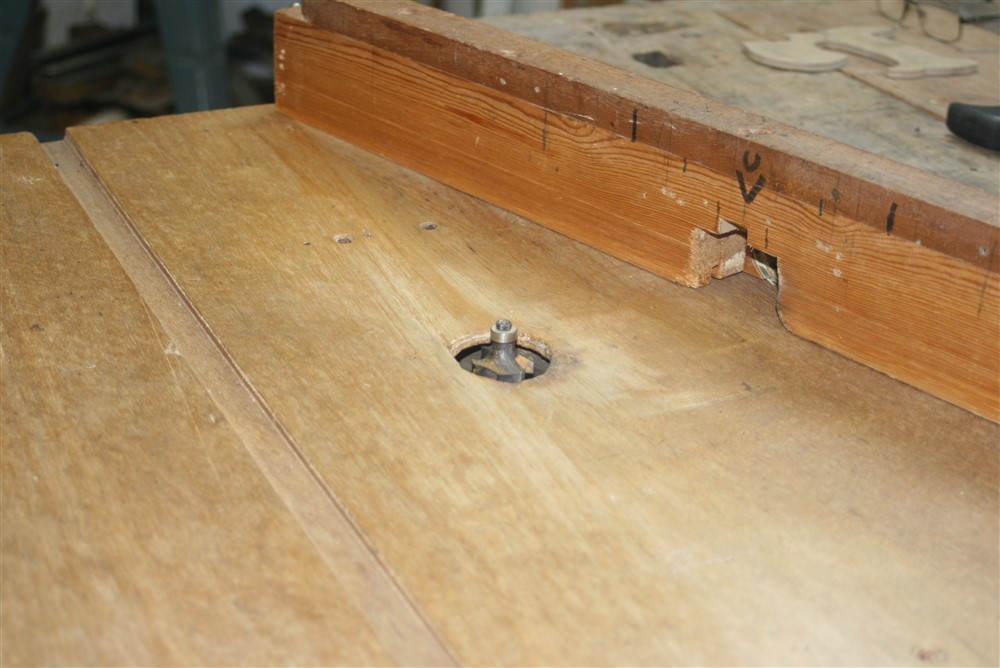
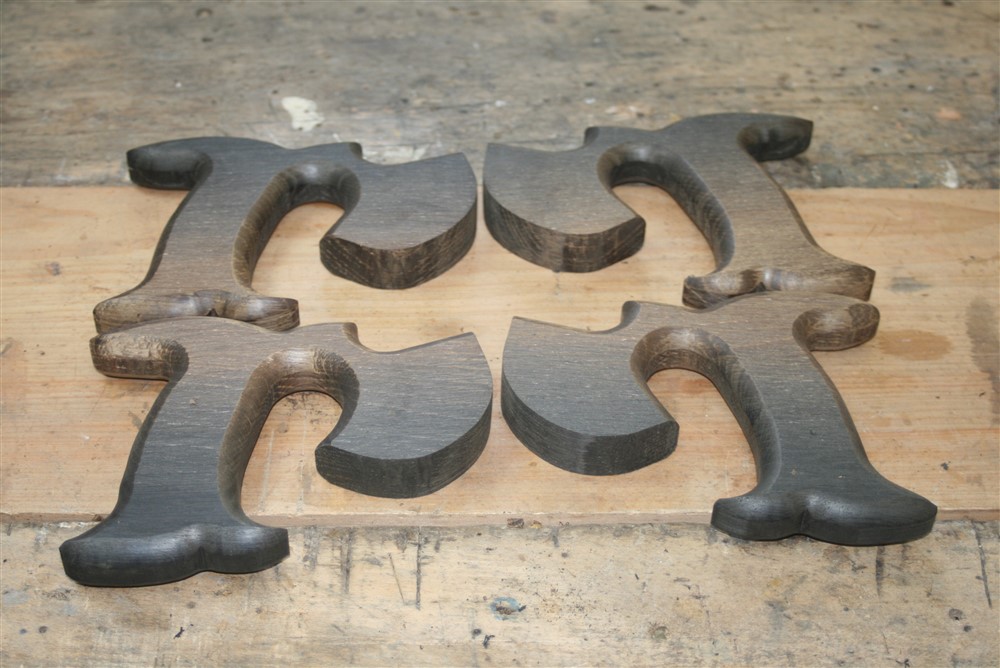
Note that the round-over doesn't extent onto the bit which sits over the plate. Square edges make marking out for the holes and the cut much easier. I started the cut using a saw packed up to the right height to cut on the mid-line of the handle, and rubbing the work against the teeth. This establishes a neat line rather easier than trying to mark out with a gauge and then following that line with a saw, freehand:
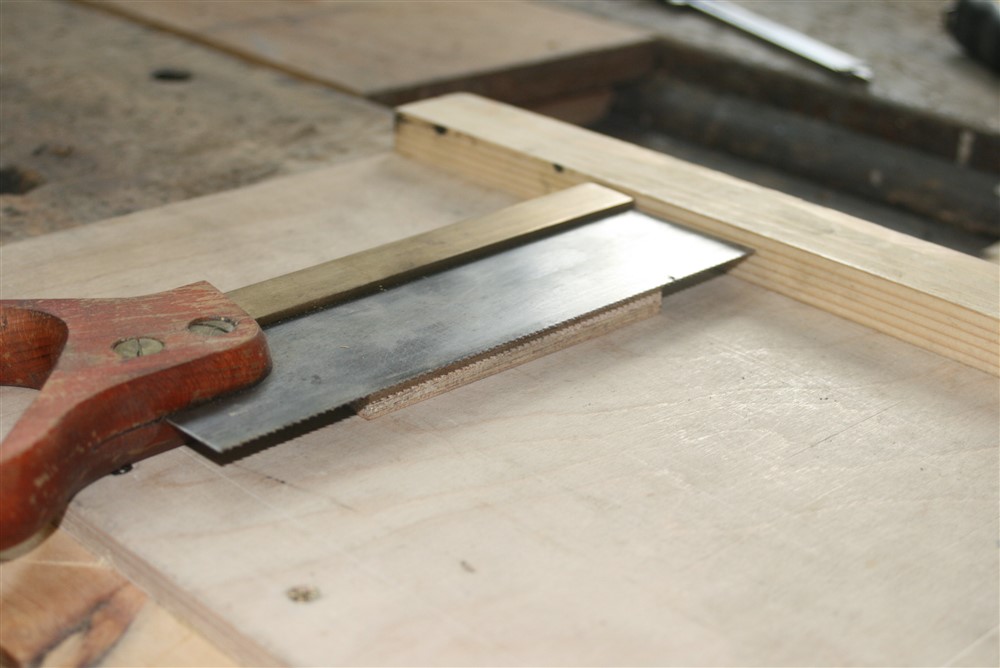

That little orange-handled Stanley, by the way, is next on the list. Twenty TPI rip cut, small, nice brass back....it'll make a beautiful dovetail saw. Anyway, onwards:
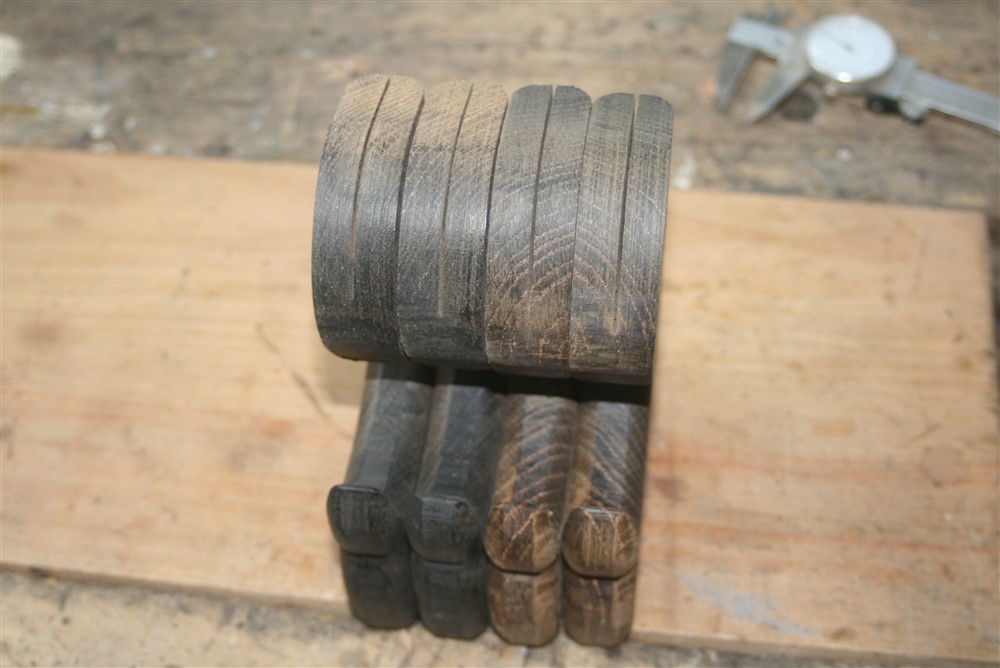
Drill out the holes, carefully cut out for the spine, clean up the blade, spend quite a while sanding the handle, then oil/ varnish/ white spirit mix wiped on and off once a day for 3 or 4 days, then screw it all together:

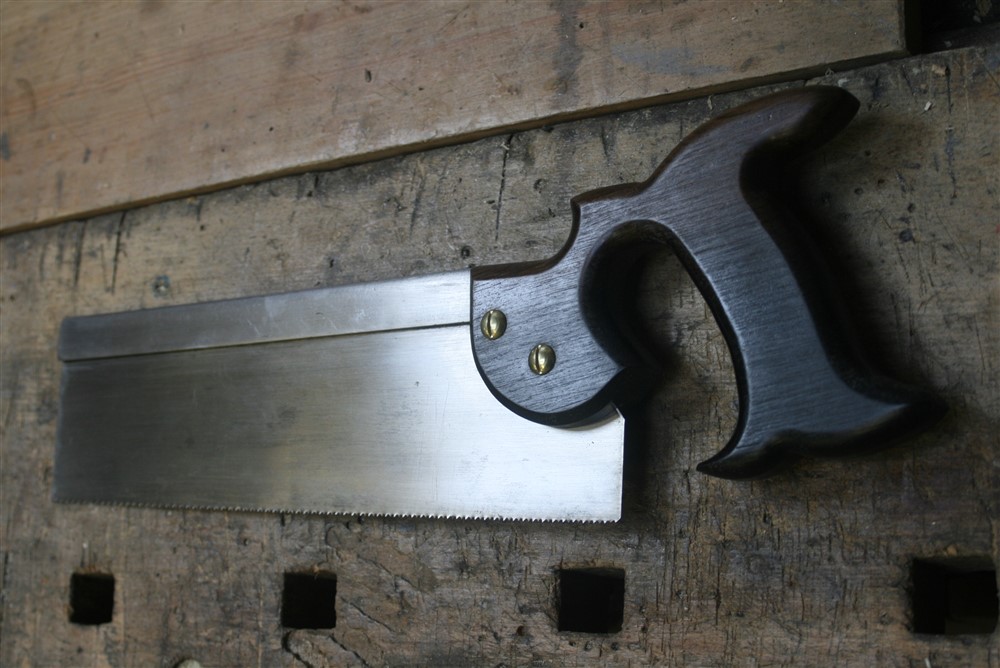
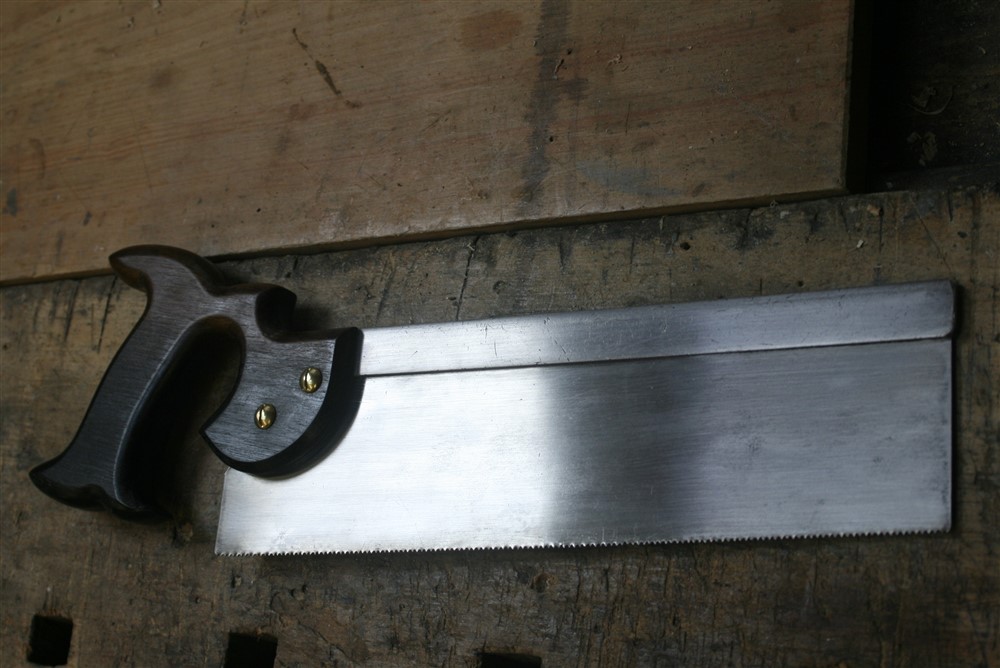
..and a reminder of how it was:

* Naughty words censor doesn't like fli-ck. Sheesh.........


It was originally painted black, it seems. Anyway, it cut nicely (14 TPI, cross-cut teeth), teeth and plate were all fine. I've got some others, and a nice piece of bog oak, so I decided to cut out 4 at once:



I cleaned up to the line with a belt sander, rasps and files:

Next step was to round-over on the router table. Please, if you're a beginner, don't do this. The chance of catching an end grain and having the work phlicked* around and your fingers pulled into the cutter are extremely high:


Note that the round-over doesn't extent onto the bit which sits over the plate. Square edges make marking out for the holes and the cut much easier. I started the cut using a saw packed up to the right height to cut on the mid-line of the handle, and rubbing the work against the teeth. This establishes a neat line rather easier than trying to mark out with a gauge and then following that line with a saw, freehand:


That little orange-handled Stanley, by the way, is next on the list. Twenty TPI rip cut, small, nice brass back....it'll make a beautiful dovetail saw. Anyway, onwards:

Drill out the holes, carefully cut out for the spine, clean up the blade, spend quite a while sanding the handle, then oil/ varnish/ white spirit mix wiped on and off once a day for 3 or 4 days, then screw it all together:



..and a reminder of how it was:

* Naughty words censor doesn't like fli-ck. Sheesh.........


































